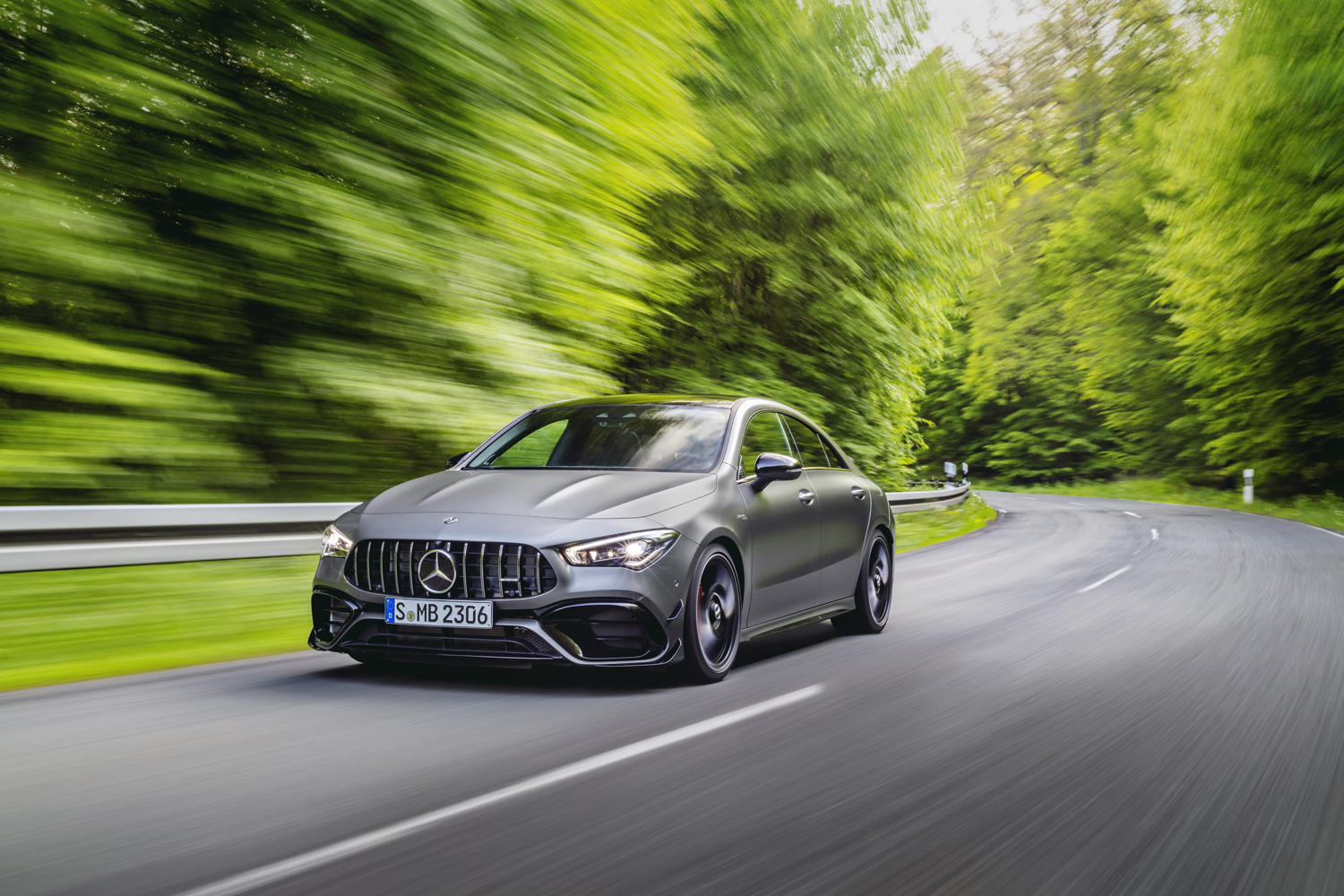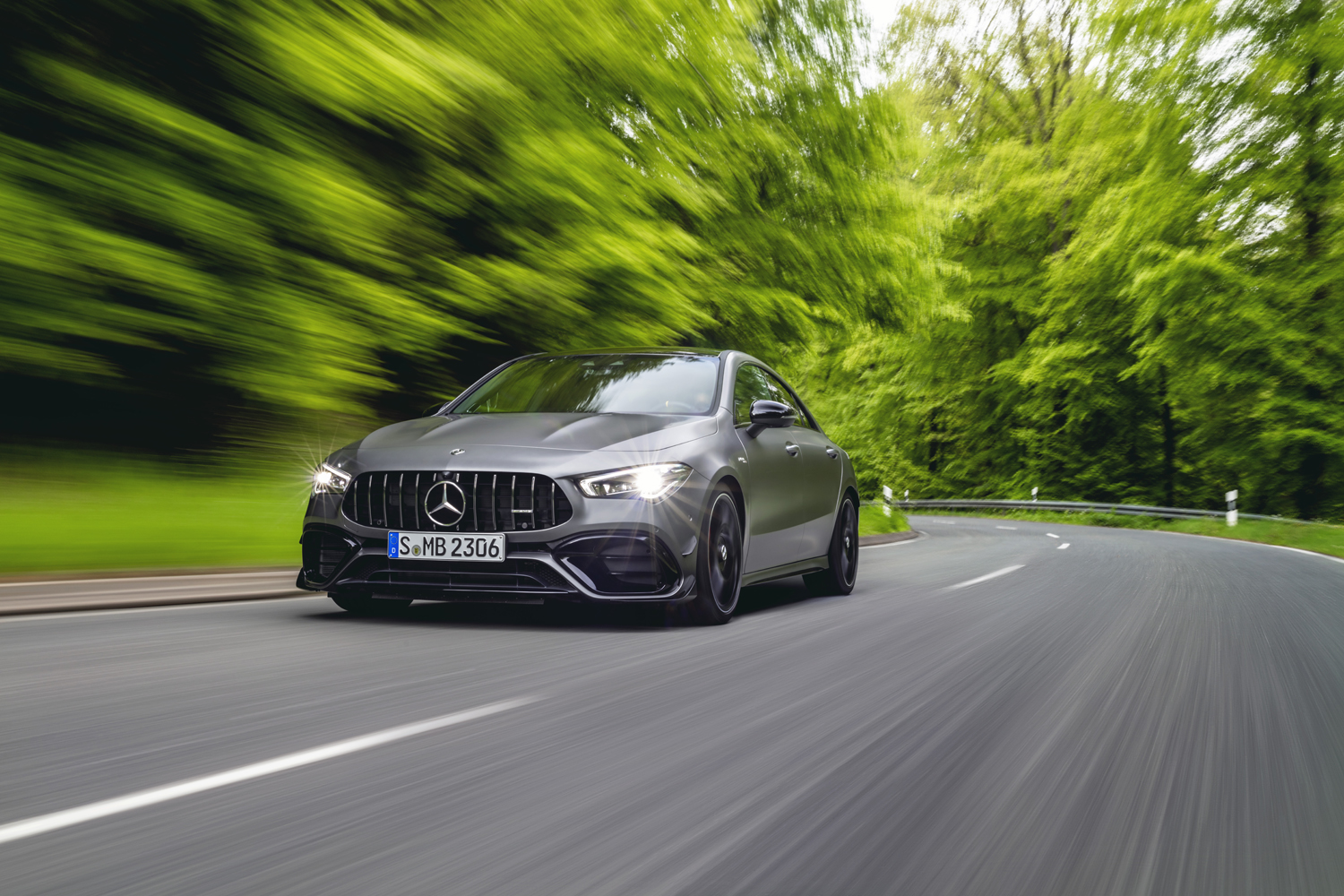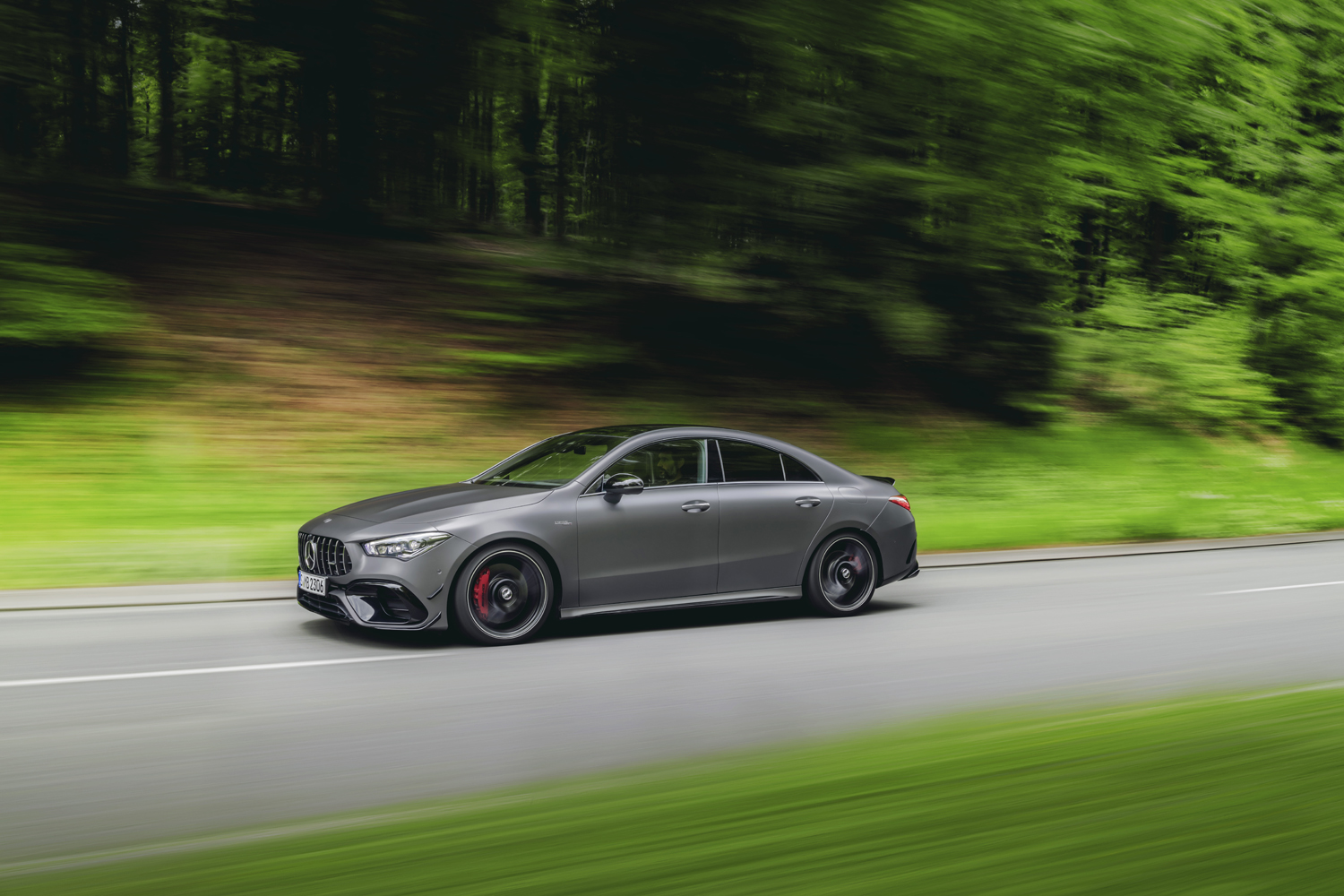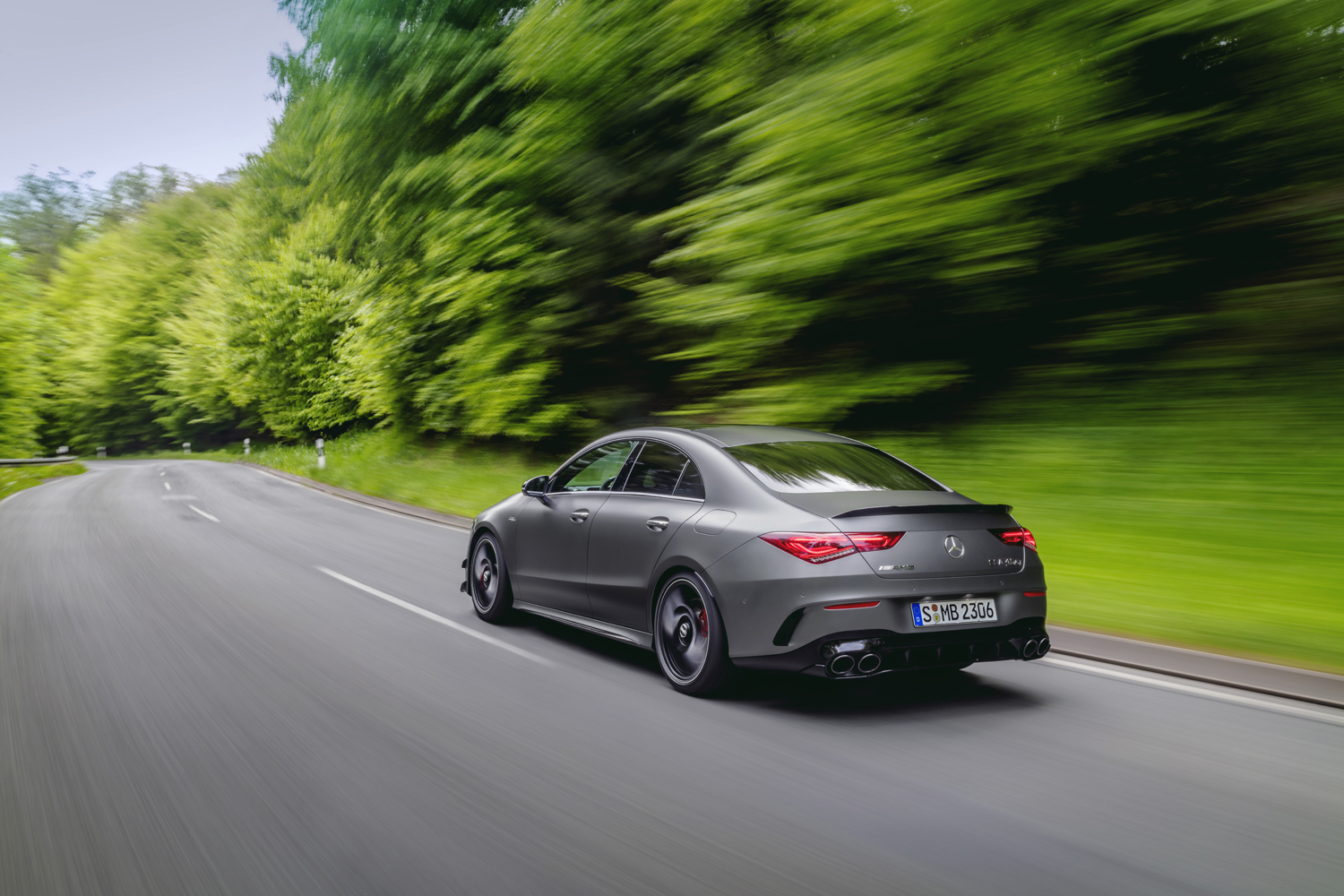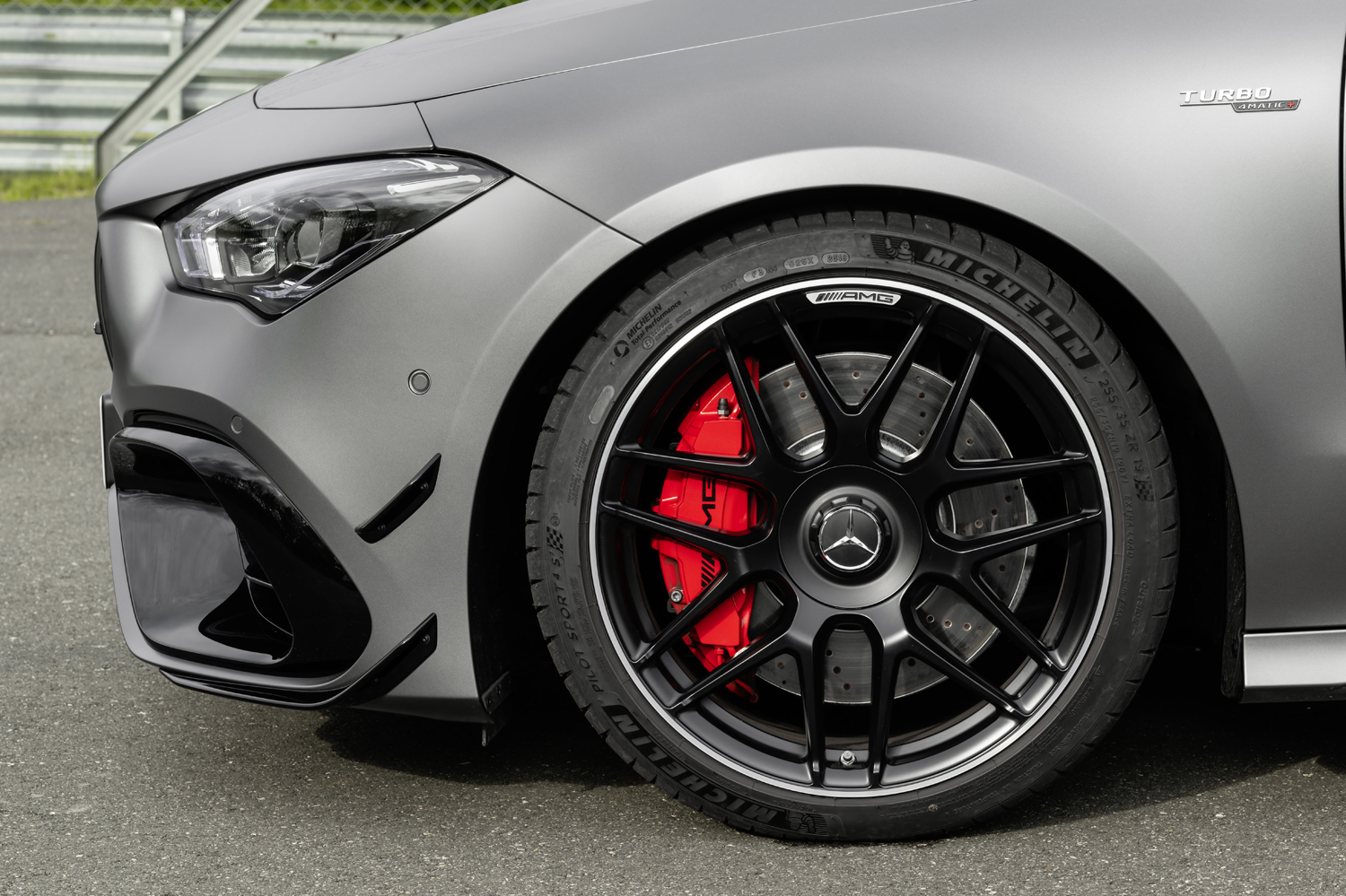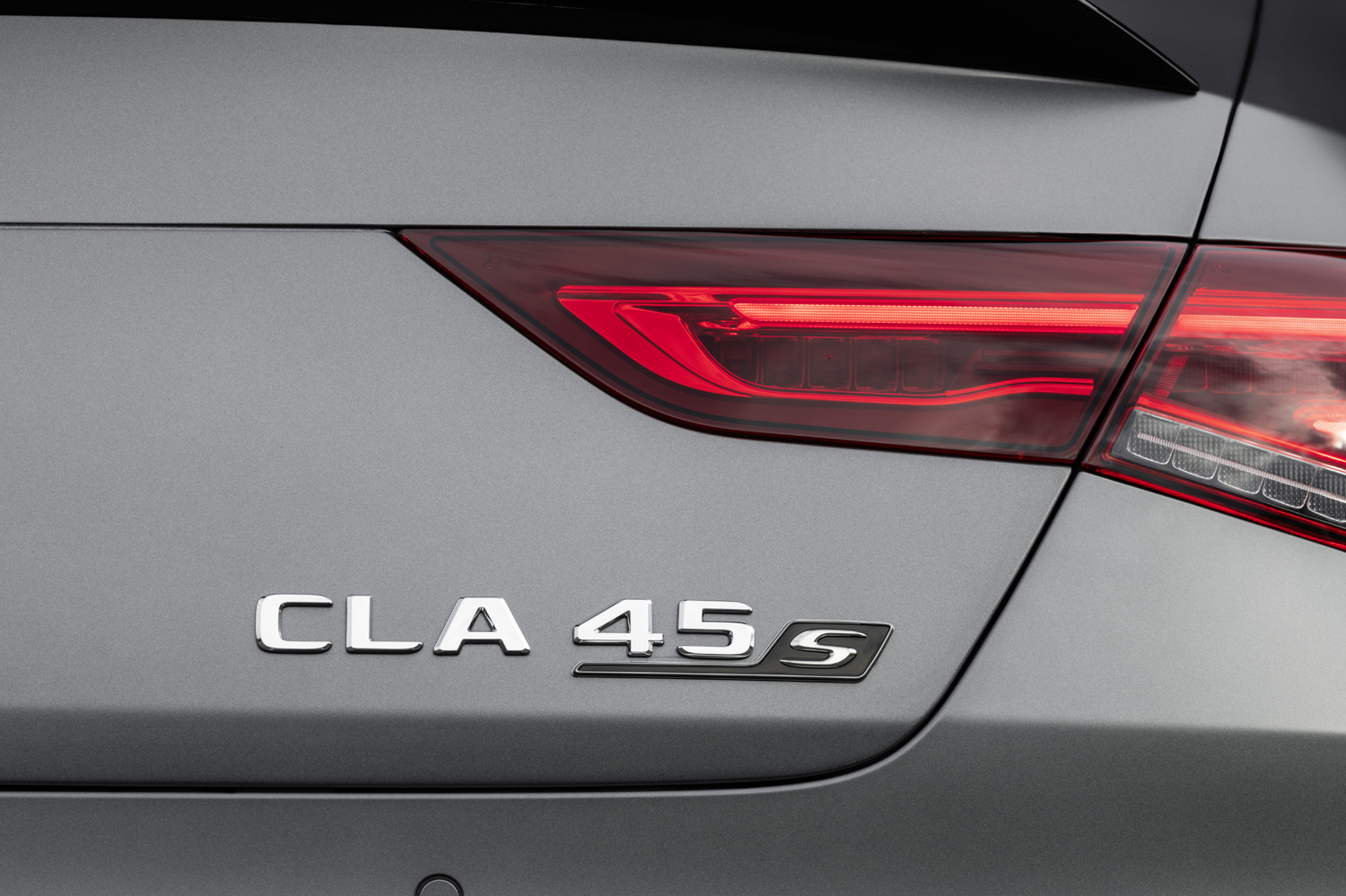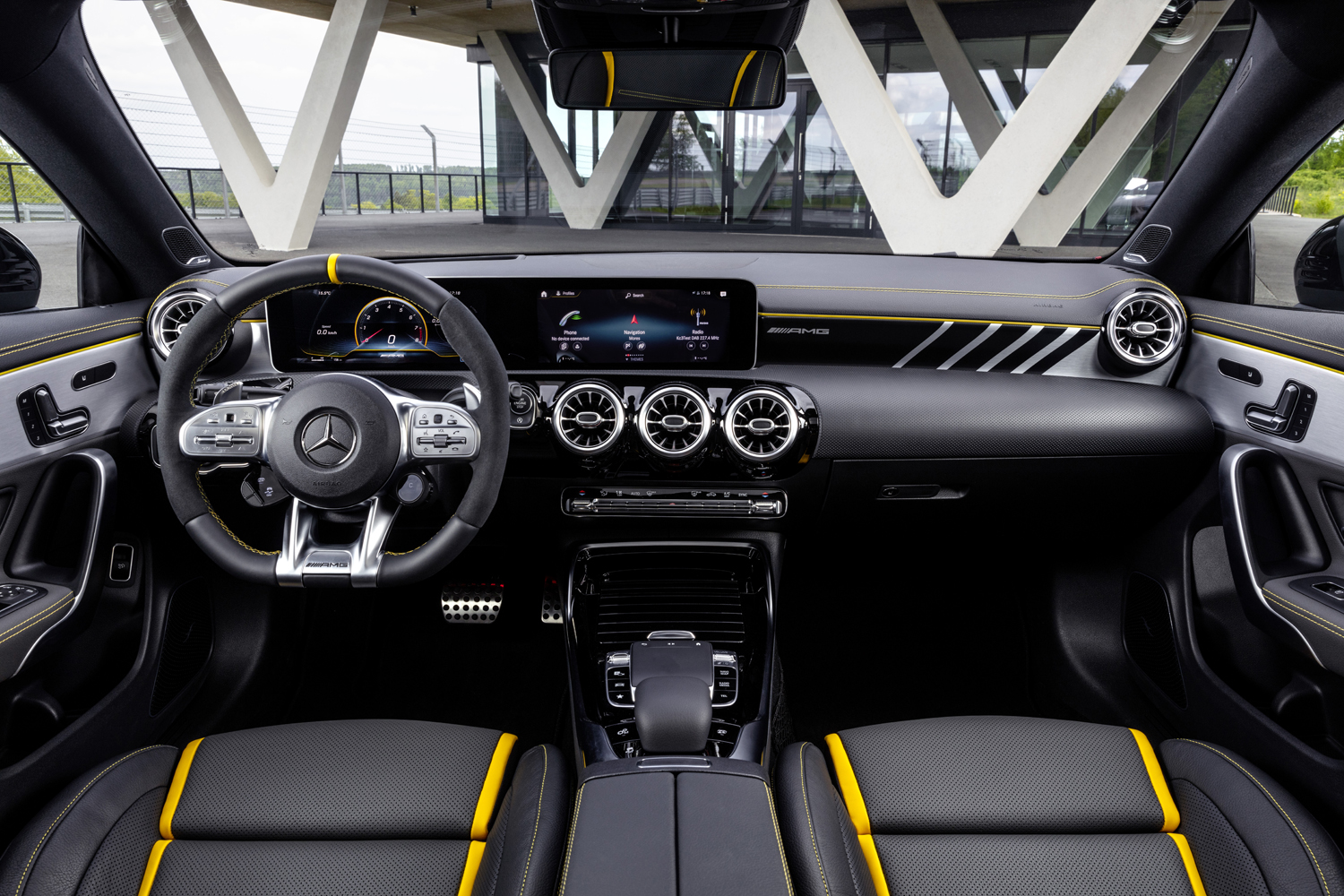Mercedes-Benz traveled to CES 2019 to introduce the second-generation CLA. It was a fitting venue for a car that’s considerably more high-tech than its predecessor. In Las Vegas, the German firm put a greater emphasis on connectivity than on horsepower. That changed at the 2019 New York Auto Show, when it unveiled a more powerful, mid-range variant of the sedan developed by in-house tuner AMG, and the lineup grew again in July 2019 with the addition of a fire-breathing model named CLA 45 fitted with the most powerful four-cylinder engine in the world.
The CLA remains the design-led member of Mercedes’ growing family of compact cars. Stylists took its front end in a more aggressive direction by giving the headlights and the grille a more angular design. The rippled hood — a styling cue that helped the original CLA stand out — returns on the second-generation model. When viewed from the side, the CLA boasts a fastback-like roofline reminiscent of the third-generation CLS and frameless doors. The rear lights are also CLS-like. To us, the 2020 CLA looks more mature than its predecessor.
The new CLA stretches a little bit longer and wider than its predecessor, and it rides on a slightly longer wheelbase. Mercedes needed to increase the model’s footprint to avoid creating internal competition for its new all-star, the A-Class Sedan.
Inside, upmarket variants of the CLA benefit from the Mercedes-Benz User eXperience (MBUX) infotainment system displayed on a high-resolution, 10.25-inch touchscreen. This artificial intelligence-powered software adapts itself to individual users by learning their habits, whether it’s a phone call made at the same time on the same day every week or a route driven regularly. Natural voice-recognition technology lets the passengers navigate the software’s various functions. They’re also able to use the touchscreen or a touchpad located on the center console.
This artificial intelligence-powered software adapts itself to individual users by learning their habits.
The tech doesn’t stop at the screen. Mercedes added an automatic dome light that turns on when it detects a movement below it. The CLA inaugurates this technology, but we expect it will spread across the rest of the Mercedes lineup in the coming years. Electronic driving aids like lane-keeping assist, speed limit assist, and blind spot assist are also available.
Mild, hot, and fire
The entry-level model is called CLA 250. Power comes from a new, 2.0-liter four-cylinder engine turbocharged to deliver 221 horsepower at 5,800 rpm and 258 pound-feet of torque from 1,800 to 4,000 rpm. Front-wheel drive and a seven-speed automatic transmission come standard, and Mercedes’ 4Matic all-wheel drive system is offered at an extra cost.
Like the A35 unveiled in early 2019, the mid-range CLA 35 receives a turbocharged, 2.0-liter four-cylinder engine tuned to provide 302 hp at 5,800 rpm and 295 lb.-ft. of torque from 3,000 to 4,000 rpm. The turbo four spins the four wheels through a seven-speed automatic transmission and a sport-tuned version of Mercedes’ 4Matic all-wheel drive system. Mercedes predicts its latest sport sedan takes a brisk 4.6 seconds to reach 60 mph from a stop. From there, the CLA lineup only gets spicier.
The CLA 45 (pictured above) returns with a hand-built, 2.0-liter four-cylinder engine that makes 382 hp at 6,500 rpm and 354 lb.-ft. of torque between 4,750 and 5,000 rpm. It’s the most powerful series-produced four-cylinder engine on the market. Bolted to an eight-speed transmission, it pelts the CLA 45 from zero to 60 mph in about four seconds flat, and onto a top speed that’s electronically limited to 155 mph. All-wheel drive is the only configuration available, though engaging the optional drift mode sends the engine’s torque to the rear axle.
The 45 looks meaner than its tamer siblings thanks to a model-specific design characterized by AMG’s trademarked Panamericana grille. The European-spec model pictured in the images released by Mercedes is called CLA 45 S, so it’s a step above the standard CLA 45, and it delivers a mighty, 421-horsepower punch from the same turbo four. Mercedes hasn’t announced whether this version will be sold in the United States, or if it will be offered only in overseas markets like Europe.
The mild, hot, and fire versions of the 2020 Mercedes-Benz CLA will arrive in American showrooms by late 2019. Pricing information will be released closer to their on-sale date.
Updated on July 4, 2019: Added information about the CLA 45.
Editors' Recommendations
- 2025 Mercedes-Benz EQS sedan gets new face, bigger battery
- Mercedes-AMG EQE SUV first drive review: a better electric SUV
- Mercedes-Maybach EQS SUV is old-school luxury — electrified
- Mercedes EV charging hubs are coming to North America by the end of the decade
- 2023 Mercedes-Benz EQE SUV preview: The EV lineup grows again





